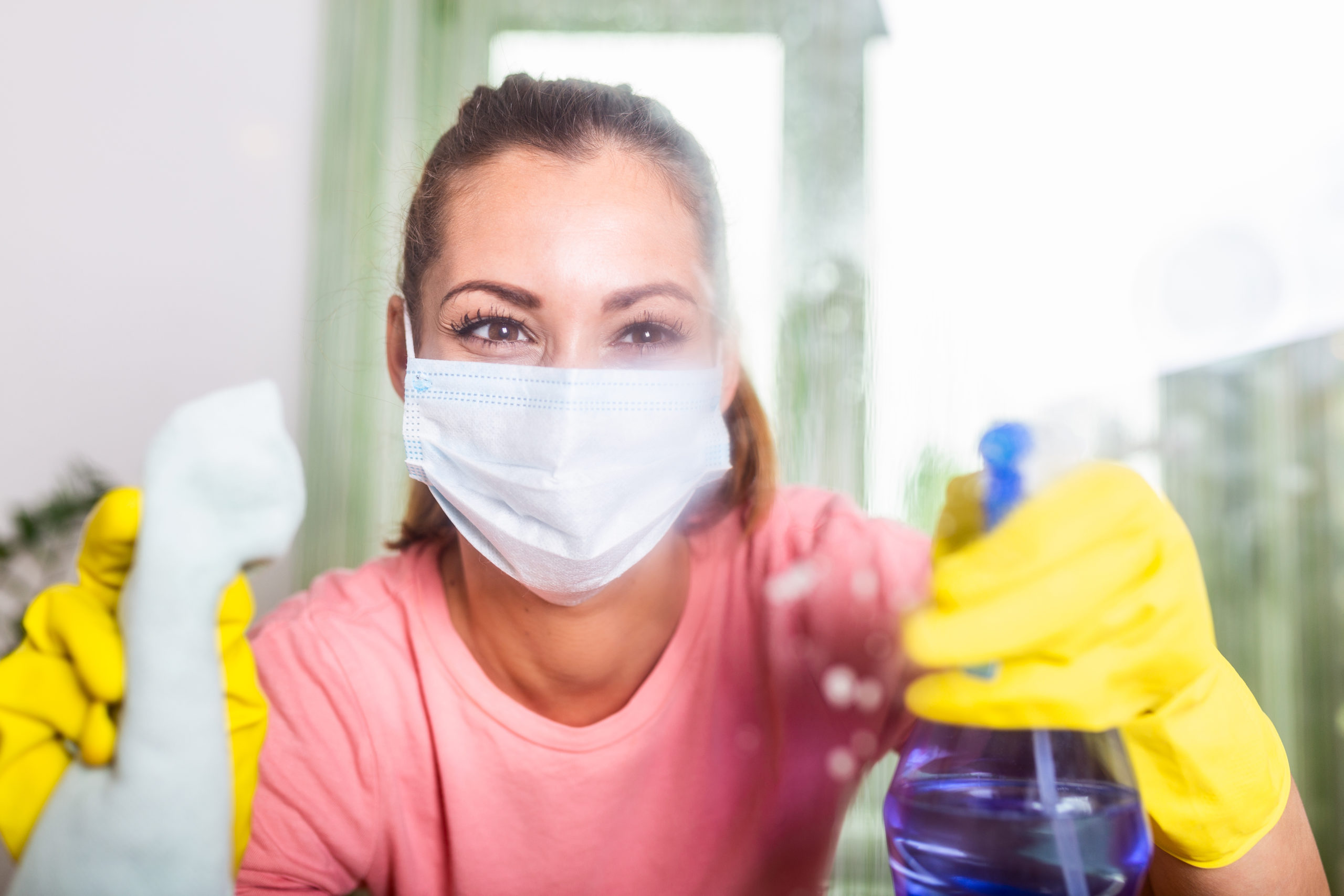How to Safely Clean Rodent Droppings
How to Safely Clean Rodent Droppings
Dangerous Droppings
Rodents are notorious for carrying and spreading over 35 dangerous diseases including Hantavirus Pulmonary Syndrome, Hemorrhagic Fever with Renal Syndrome, Lassa Fever, Lymphocytic Chorio-meningitis, Salmonellosis, and even Yersinia Pestis (the black plague). Their urinations and droppings can be infected with these diseases and other pathogens that can make you and your family extremely ill… even to the point of being life threatening.

Personal Protection
Cleaning rodent excrements puts you in direct contact with these dangers, so it is extremely important to take proper precautions to avoid contracting any disease. Prior to tackling any messes be sure to do the following:
- Ensure proper ventilation in the area by opening windows and, if possible, allow the room to air out for roughly 30 minutes prior to cleaning to allow anything airborne to dissipate.
- Wear non-absorbent gloves such as rubber, latex, or vinyl to protect your hands.
- Wear a mask to protect yourself from any airborne particles from the excrements as well as the fumes from any cleaning chemicals.
- Arm yourself with a powerful disinfectant or bleach and be sure to read the manufacturer’s instructions prior to use.

What NOT to Do/Use
Cleaning up after rodents can be tricky. Be sure to avoid any of these mistakes that can put you and your family at more risk.
- Do NOT turn on any fans to air out the room. This can make pathogens on the excrements airborne.
- Do NOT sweep or vacuum. Just like fans, this can make pathogens airborne.
- Do NOT leave rodent excrements to fester. Clean and treat the areas as soon as possible.
- Do NOT mix the use of different cleaning chemicals unless it is confirmed by manufacturers that there are no negative interactions between products.

Proper and Safe Cleaning Techniques
What You Will Need:
- Gloves
- Mask
- Paper towels/disposable rags
- Plastic bags
- Disinfectants
- Mop
Steps to Properly Clean the Area:
- Saturate the area in disinfectant/cleaning solution and allow to sit for 5 minutes for the disinfectant to take effect.
- Using paper towels or disposable rags, carefully pick up the droppings and wipe up the area.
- Dispose of droppings and used towels/rags into a plastic bag.
- Once droppings and urine have been removed, saturate the area again with the cleaner ad leave for another 10 minutes.
- Wipe off the surfaces again and ensure that no excrements or areas have been missed.
- Shampoo and/or steam clean carpets and upholstery, and thoroughly wash any contaminated bedding, blankets, clothing, etc. with heat.
- **If excrements are on the ground, a mop can be used in leu of paper towels/rags
Steps for After the Area is Clean:
- Disinfect any items un the area that may have been in contact with the rodents.
- Carefully remove gloves and dispose of both them and the bag of used cleaning materials into a secondary bag and seal it.
- Dispose of the double bagged excrements in a covered trash can outside of the home.
- Remove clothing and change into something fresh, placing the used clothing immediately into the wash.
- Allow ventilation in the room for another 15-30 minutes after cleaning.

Rodent Removal
Unfortunately, if rodents are still infesting your home, you may be in a seemingly endless battle with cleaning and, the longer the problem persists, the more at risk you and your family are. That’s why it’s important to call in your local extermination experts at the first sign of a rodent problem. We will help you rid your home for rodents for good so you can stop constantly cleaning.

Citations
Cleaning Up After Pet Rodents to Reduce the Risk of Seoul Virus Infection (2017) Centers for Disease Control and Prevention. U.S. Department of Health & Human Services. Available at: https://www.cdc.gov/hantavirus/outbreaks/seoul-virus/cleaning-up-pet-rodents.html (Accessed: November 9, 2021).
Cleaning Up After Rodents (2019) Centers for Disease Control and Prevention. U.S. Department of Health & Human Services. Available at: https://www.cdc.gov/rodents/cleaning/index.html (Accessed: November 9, 2021).
Diseases Directly Transmitted by Rodents (2017) Centers for Disease Control and Prevention. The National Center for Emerging and Zoonotic Infectious Diseases & The Division of High-Consequence Pathogens and Pathology. Available at: https://www.cdc.gov/rodents/diseases/direct.html (Accessed: April 2020).
Hanatavirus – 7 steps to safe clean-up of mouse droppings … (no date) Alberta Health Services. Available at: https://www.albertahealthservices.ca/Advisories/ne-pha-hantavirus-protection.pdf (Accessed: November 9, 2021).
How to Maintain a Pest-Free Kitchen for the Holidays
How to Maintain a Pest-Free Kitchen for the Holidays How to Maintain a Pest-Free Kitchen for the Holidays Summary: This blog educates homeowners [...]
Pests That Invade Packages & Boxes: How to Prevent Hidden Infestations
Pests That Invade Packages & Boxes: How to Prevent Hidden Infestations Pests That Invade Packages & Boxes: How to Prevent Hidden Infestations Summary: [...]
Keep Pests Out of Your Holiday Gatherings
Keep Pests Out of Your Holiday Gatherings Keep Pests Out of Your Holiday Gatherings Summary: The holiday season is all about good food [...]
Cold Weather vs. Warm Weather Infestations: How Temperature Shapes Pest Activity
Cold Weather vs. Warm Weather Infestations: How Temperature Shapes Pest Activity Cold Weather vs. Warm Weather Infestations: How Temperature Shapes Pest Activity Summary: [...]
Garden Pests Do Not Hibernate Indoors – How They Attack Houseplants And What To Do
Garden Pests Do Not Hibernate Indoors – How They Attack Houseplants And What To Do Garden Pests Do Not Hibernate Indoors – How They Attack [...]
The Scariest Pests (And Why They Freak Us Out)
The Scariest Pests (And Why They Freak Us Out) The Scariest Pests (And Why They Freak Us Out) Summary: A practical, homeowner-friendly guide [...]

